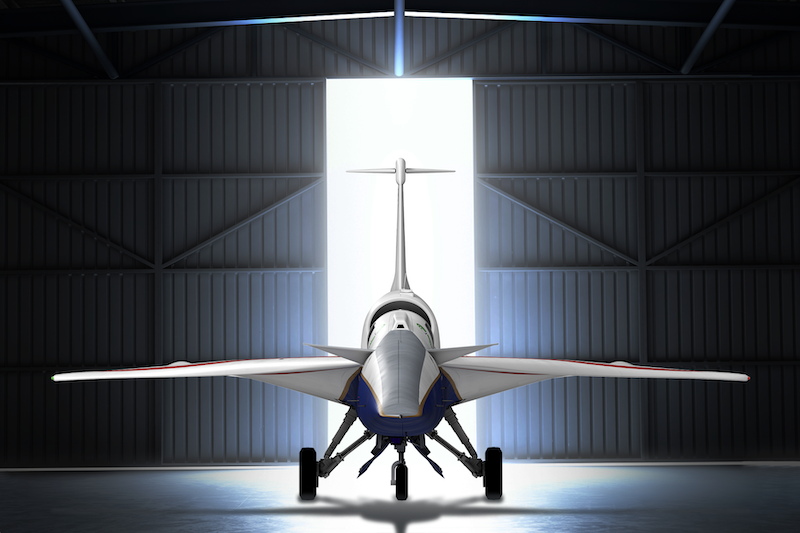View a livestream of the X-59 rollout here.
X-59 set to roll out on Friday
NASA, in collaboration with Lockheed Martin, plans to unveil the X-59, an innovative supersonic jet, on January 12, 2024. Its design eliminates the windshield in an effort to dampen the sonic booms that come with supersonic flight. The unveiling will happen live from Lockheed Martin’s “Skunk Works” facility in Palmdale, California.
Viewers can tune into NASA’s livestream of the event at 4:00 p.m. EST (21:00 UTC) on YouTube and through the agency’s NASA+ streaming service, NASA app, and website. You can also watch it here in the video above.
Chasing the ‘sonic thump’
The concept for the X-59 came from NASA’s Quiet SuperSonic Technology (Quesst) mission. It’s been in development since 2019. Traditional supersonic jets produce sonic booms that can distress people and animals and even damage nearby buildings. But engineers planned the X-59 jet to generate a milder “sonic thump,” like the sound of a car door closing.
In order to build a quieter supersonic jet, engineers had to eliminate the windshield. More than one-third of the aircraft’s 99.7-foot (30 m) length consists of a 38-foot (11.5 m) nose section. And with a nose section that long, it would have blocked any view from a windshield anyway. So instead, pilots will rely on the X-59’s External Vision System (XVS), which uses forward-facing cameras and cockpit displays to navigate.
A single engine from General Electric Aviation provides the power to the X-59. It can reach a speed of Mach 1.4 (925 mph/ 1,500 km/h) at an altitude of 55,000 feet (16,800 m). The experimental jet will embark on a research campaign, flying over select residential areas to gather data on how the public experiences and reacts to the minimized sonic thumps.

Awaiting public opinion
According to NASA, the X-59 is scheduled to take flight this year. The next step would be to seek approval for commercial supersonic flights from regulatory agencies, such as the Federal Aviation Administration (FAA). Currently, there are restrictions for supersonic flights over land. A tamer sonic thump could pave the way for a new era of supersonic air travel. One of NASA’s goals is to make air travel over land faster, safer and quieter.
While the X-59 offers promising advancements, public reception is never certain. NASA will gather feedback from the public during test flights over U.S. cities in 2026, ensuring that the sonic thump meets expectations of being gentler than conventional sonic booms. Some people have raised concerns about the environmental impact and increased carbon emissions associated with hypersonic flights. NASA says it remains focused on addressing sonic booms with the X-59, and that other challenges of supersonic flight, such as emissions and fuel burn, are subjects of separate research initiatives.
Peter Coen, NASA’s Quesst Mission Integration Manager, said in a statement in April 2023:
We’re definitely ready to write a new chapter in the history of supersonic flight, making air travel over land twice as fast, but in a way that is safe, sustainable, and so much quieter than before.
Bottom line: NASA, in collaboration with Lockheed Martin, plans to unveil the X-59 on January 12, 2024. The aircraft’s design aims to dampen the sonic booms associated with supersonic flight.











